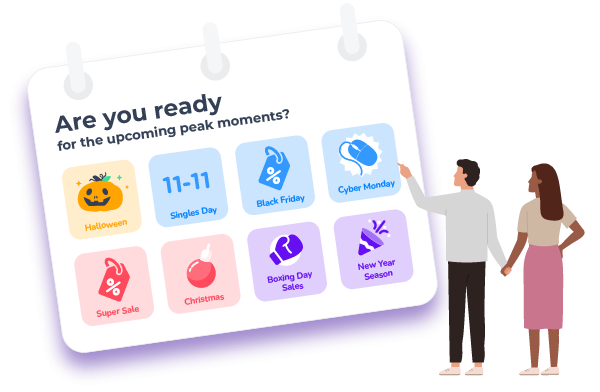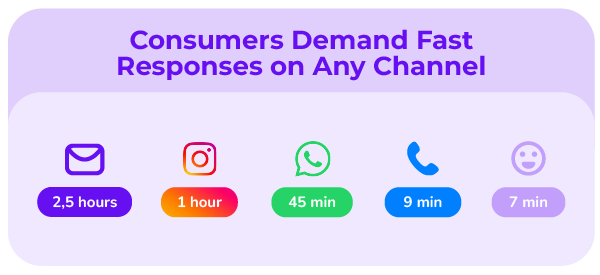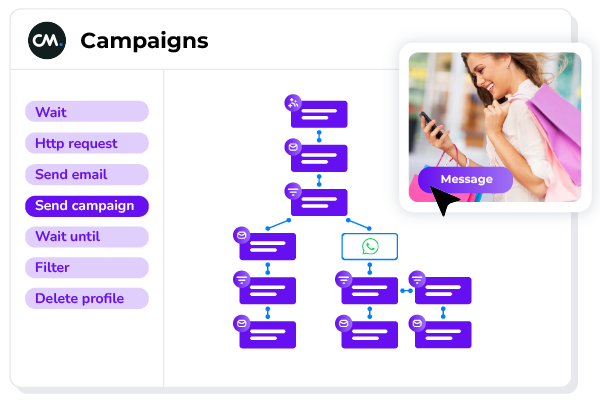- What Are Peak Moments in eCommerce?
- Why Peak Season Also Carries a High Risk
- Your Customer Service and Marketing Infrastructure Is a Mine of Data
- What Data Points Should I Take a Look At?
- 1. Service Interactions
- 2. Understanding Channels
- 3. Chatbot Effectiveness
- 4. Customer Journey Gap
- 5. Persistent and Repeated Issues
- 6. Marketing Campaigns
- 7. Wrong Chosen Metrics
- Two Main Themes for Preparing Peak Season in eCommerce
- Start Preparing for eCommerce Peak Season with Data Today.
What Are Peak Moments in eCommerce?
As we welcome the holiday season, starting in November and continuing throughout December, it becomes the peak sales season for retail and eCommerce sites worldwide. This period presents great opportunities for businesses selling products and services online. However, it's important to plan ahead to avoid missing out on these opportunities.

While peak season brings potential, it also carries a high risk. Many eCommerce retailers generate the majority of their profits during this period, but they also operate at maximum capacity. Any unexpected service issues can lead to dissatisfied customers and lost sales. Effective communication becomes paramount during these times.
Why Peak Season Also Carries a High Risk
But being responsive is only part of the equation. To make the most of eCommerce peak season, being predictive is key. By analysing data, you can anticipate pain points and address them proactively.
Your customer service and marketing infrastructure provide valuable insights. Keep records of service, marketing, and sales interactions, and consider them as indicators for potential peak-season problems.
Look into service interactions to determine customer satisfaction and purchasing behaviour.
Understand the channels customers prefer and their expectations regarding response times.
Evaluate the effectiveness of your chatbot and its handover rate to human agents.
Identify gaps in the customer journey and areas where customers are more likely to abandon their purchase.
Pay attention to persistent and repeated issues, and ensure your marketing campaigns are strategically planned to avoid overwhelming your customer service team.
Finally, reassess the metrics you use to measure performance and make sure they align with customer satisfaction.
Communication can solve a huge number of these issues – from basic SMS alerts to sophisticated chatbots and customer service software - help you stay on top of your game during busy times..
Your Customer Service and Marketing Infrastructure Is a Mine of Data
Coming back to keeping records of your service, marketing, and sales interactions. Perhaps a database of common Q&As for your customer service agents to refer to, customer problems divided by type; standard data points like the length of call, and scores from post-interaction customer surveys. So far, this is pretty straightforward, but it’s possible to think about that data in a different way: as indicators for peak-season problems yet to come.
Every service interaction – from the distribution of common queries, to the information requested by customers, to the channels they use to message you and the keywords that pop up time and time again – is rich with insights. And analysing them is the perfect prep for your busiest season ahead … if you start now.

What Data Points Should I Take a Look At?
Review data from previous years. Where were the chokepoints and bottlenecks which interrupted customer journeys the most, and which interactions led to the most successful outcomes?
These are 7 data points that help you to define pain points and to tackle them:
1. Service Interactions
What proportion of interactions ended with a satisfied customer, and can you discover if they made a purchase afterward? And do you also know what kind of questions occurs the most? You can start by looking into the data of different interactions with your customers. Do you see any connections or common threads? That could help you to prepare for busier times and, for example, update your FAQ or even optimise your chatbot. And if you do not have any systems to organise your customer service interactions, then start researching which tool fits best to your needs.
Data points to analyse examples:
Received messages
Phone calls
Handovers from chatbot to agent
Tags conversations - what kind of interactions are most occurring?
2. Understanding Channels
Is there a big difference in customer satisfaction between email, WhatsApp, voice calls, or other channels? And do you know how long customers want to wait for answers or services on specific channels?
The point of being multichannel is to be equally effective on each, so customers aren’t corralled into one (and your capacity can be more evenly spread, too). Look back into your data and see what channels are important during peak moments and make sure you have those covered when more customers want to get in touch with you.

3. Chatbot Effectiveness
Chatbots help you to automate conversations and ensure that customers can contact you whenever they want. A chatbot provides you with very useful data about your customers. For example, you learn what customers are looking for and what kind of questions they ask. And what about the moment that a handover is needed to a human agent? As you now understand, your chatbot's effectiveness provides valuable information gathered during automated conversations. This will definitely help you to prepare for coming peak moments.
Chatbot data to analyse:
Number of interactions during peak season period last year
Labels or categories of automated conversations
Completion of conversations
How many handovers from chatbot to agent - human takeover rate
4. Customer Journey Gap
If you’ve mapped out typical customer journeys, are there specific points where losing the customer is higher than usual?
Look for correlations between service interactions and abandoned baskets; look at returns due to a poor after sales experience. Or dive into your former marketing campaigns and search for opportunities to create even better one-to-one personalised campaigns. Maybe you'll discover that newsletter engagement is way higher via WhatsApp than traditional email. Map out the customer journey, combine it with data you have, and improve where needed.

5. Persistent and Repeated Issues
If a customer calls twice about the same problem, it should raise a red flag. Similarly, if multiple customers are reaching out to you with the same type of issue at the same time, it's crucial to investigate further. Take the time to identify the root causes behind these recurring questions or problems.
Ask yourself why these same questions keep arising and how you can address them effectively with your customer service and marketing team. Additionally, consider optimising your website to provide clear information and solutions upfront, reducing the need for repetitive inquiries.
During peak seasons, it's essential to avoid overwhelming your service team due to a lack of awareness about the most common questions or repeated conversations. To stay proactive, analyse data points from various sources to gain insights into the most frequent inquiries.
Consider implementing a system for tagging conversations and creating categories to streamline the identification of common issues. Additionally, examine which types of marketing campaigns generate more interactions with your service department.
By actively monitoring and addressing these patterns, you can improve customer satisfaction, streamline your operations, and ensure a smoother experience for both customers and your service team.
6. Marketing Campaigns
During the busy season, it's crucial to avoid overwhelming your customers with multiple campaigns going out on the same day. To manage the workload more effectively, bring together your marketers and service managers to create a staggered launch calendar for Q4. Consider the impact of campaign releases on customer inquiries. Are your customer service team members aware of the upcoming campaigns? Integrating your customer service with your marketing campaign software can be a solution.
By integrating these two functions, customer service agents will have access to more relevant information alongside their conversations with customers. This eliminates the need for agents to guess which information or campaign has been sent and allows them to directly understand what the customer is referring to. This integration connects data with service at the right time, improving efficiency and providing a seamless experience for both customers and agents.

7. Wrong Chosen Metrics
Sometimes the problem’s with the way you measure performance: a met goal doesn’t mean a good outcome. If your agents are rewarded for lower handling times of any kind of customer interaction, make sure to check if this is actually leading to higher customer satisfaction – or whether you’re just incentivising them to end the call too soon!
Tip: Look into your metrics, back it up with your data to better understand what is happening.
Ask yourself: what metrics do I measure and do they really help to understand and tackle peak moments during Q4?
Two Main Themes for Preparing Peak Season in eCommerce
In preparing for the peak season in eCommerce, two key themes emerge. Firstly, unlocking the greatest insights relies on connecting your data, allowing you to view the customer journey as a seamless series of interactions across marketing, sales, and customer service. By bringing these components together, you gain a holistic understanding of your customers' experiences.
Secondly, it's crucial to prioritise the customer's perspective over internal organisational considerations. Ultimately, what matters most is delivering an exceptional experience from the customer's point of view, rather than focusing solely on internal processes. By embracing these themes, you can position your eCommerce business for success during the peak season and beyond.
Data is your friend. Every kind of customer interaction is a great learning point.
Start Preparing for eCommerce Peak Season with Data Today.
You’re probably already thinking about peak season 2023 – which is great; the earlier you can resolve busy-period bottlenecks, the better. And we’d like to help.
CM.com is not just a platform for sales, marketing, and customer service, we offer much more. With CM.com, you have the power of connected data at your fingertips. This means you can gain a comprehensive view of every customer journey, identify key interaction points, and optimise the overall customer experience.
By continuously improving and discovering new insights, you can make the most of your available resources to serve a larger customer base.
